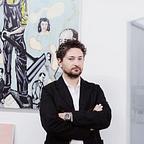The most beautiful memory
“It is an illusion that photos are made with the camera… they are made with the heart, the eye and the head”
-Henri Cartier Bresson
I’ve loved photography for as long as I can remember. Not so long ago, I found a polaroid picture I had taken when I was seven years old. For the last years, I’ve had on and off relationships with my cameras, but I think it really intensified when I bought my first Leica, a beautiful 35mm Minilux.
While doing my undergrad in architecture, I took a photography class in which I learned history, theory and film developing; strangely enough, it was one of the clases that had most impact in me. Although I went to architecture school for seven years (that’s another story) and did a masters in design and research of cities, I truly believe that I have come to understand a city and how people inhabit it through photography.
I fell in love with the way William Eggleston and Stephen Shore documented streets, cars and people in different cities. From Eggleston I learned to take one single shot, to be able to do that, you really need to pay attention and be conscious of your environment, lately in my life, that is one of my favorite words, consciousness.
Robert Capa said that if a picture was not good enough, it was because you were not close enough. For me, photography has become a way to connect to an environment, to see the city in a different way. To understand the urban mechanisms, to frame different scenes through the lens, to really see. Something we rarely do while living in the routine of our lives, to stop and see, much less while taking pictures from a smartphone, which I believe just has the opposite effect, it becomes a barrier, an extra layer between us and the world around us.
There is something very intimate in the act of making a photograph, especially a stranger’s photograph, it’s voyeuristic, some people could even consider it a very aggressive act. But that is the beauty of cities, this melting pots of random, intense and in your face encounters.
Seven years ago, while on an amazing trip in Copenhagen, I bought a 1970’s M6, and it became almost inseparable from me. Although it’s quite heavy, it has been there with me on almost every trip, usually I travel for at least two weeks a month, so that is something. This past December, whilst again in Copenhagen, a pickpocket took my first Leica from my jacket, so for me, there’s a weird connection between the city and photography.
A couple of weeks ago, I was back in Copenhagen for a few days. While doing one of my favorite pastimes, Dérive, on a beautiful sunny day where everyone was outside on their bicycles, taking dips in the river or having a glass of wine in every imaginable public space, I walked by this construction site.
I’m always curious about construction sites in different countries, trying to understand how different they are from my sites. While taking a quick look, something caught my attention, on the neighboring wall, you could read the outline of the demolished house. I have no idea what the house looked like, only that it was two or three floors and had a pitched roof. But the outline was so beautiful, the stereotypical shape that any kid would draw when they think of a house.
It was such a simple line drawing, but charged with so much meaning, a dwelling, our most important space. I started dreaming of what this house must have been like, at first, wondering who had built it. For me, this is always the first question, who’s hands had participated in erecting this structure, how much passion and craft must have been put into assembling, brick by brick, what would become the most important building in the world for a couple of people. How many dreams where built and how many destroyed within those walls? Life is all about experiences and memories, a large percentage of them, made within these domestic spaces. This image itself was a memory, what was and what could have been.
One of my favorite art pieces is a memory of a piece. A scar that repaired a cut that Doris Salcedo did on the concrete floor of the Tate’s Turbine Hall in London, all you can see now is a concrete scar, a painful memory. Memories sometimes turn into scars, but that’s what makes us who we are.
We are also shaped by our built environment and the places that we inhabit. The spaces where we sleep, where we dream, where we cook, the streets that we walk, the places where we meet. Let’s build better places, let’s build places that let us imagine that everything is possible.
